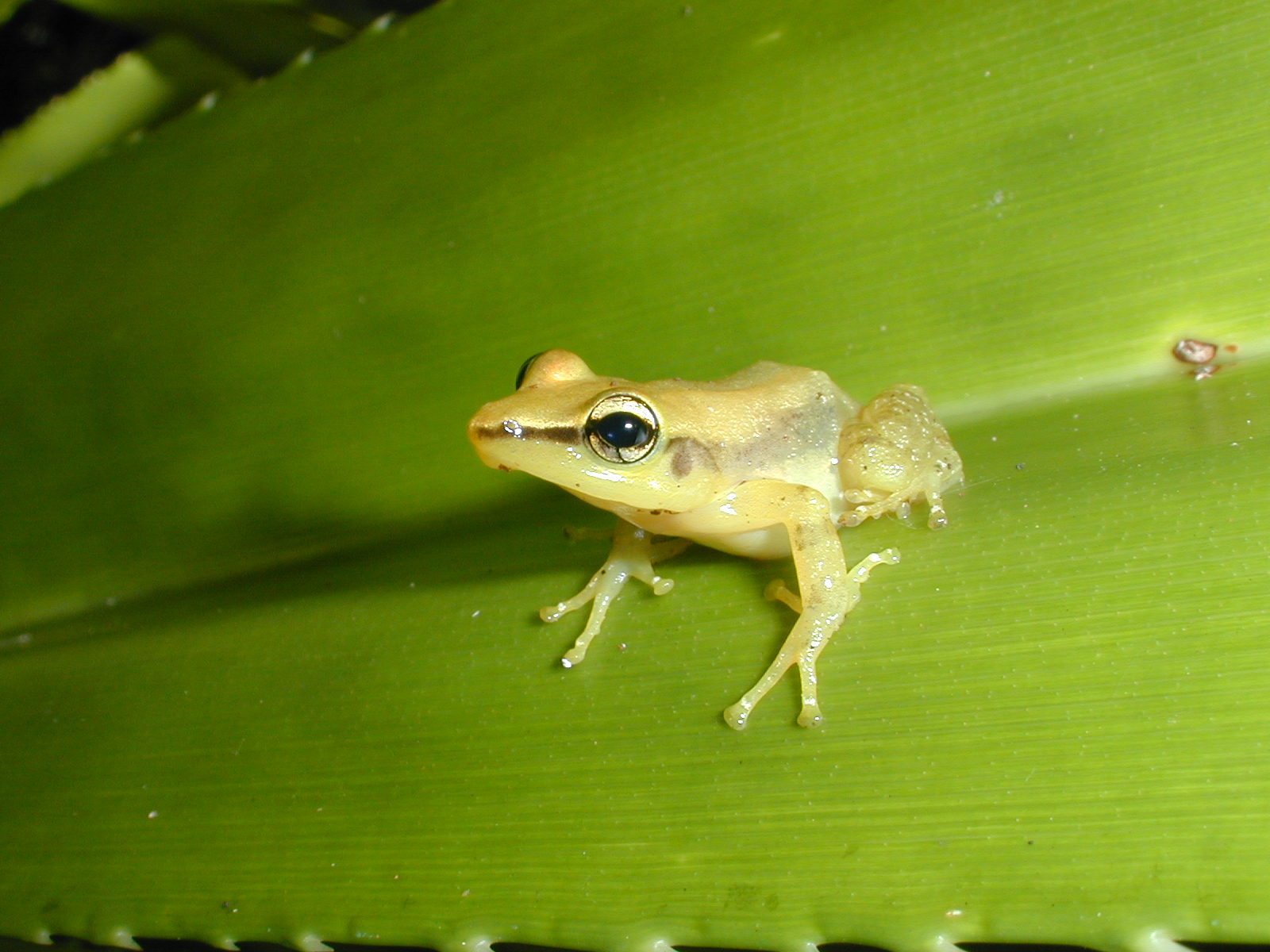In May of this year, I took three College of Wooster undergraduates to the Osa Peninsula of Costa Rica to study frogs, snakes and lizards. April Arquilla (’17) did a field experiment on coral snake mimicry, Ben Grunwald (’17) studied lizards diversity in primary and secondary rainforests and Linnea Johnson (’17) studied glass frog diversity in primary and secondary rainforests. When not working with these fabulous students, I continued my studies of ecological niche use and parental care in glass frogs. We ate great food, made great friends, saw a lot of incredible wildlife and worked hard in the jungle to get our data. Hope to go down again next summer!
Inaugural Salamander Squad Outing
The very first group of intrepid salamander biologists went out to Wooster Memorial Park on Saturday, September 17th. It rained much of the early morning hours but then let up as we went out into the woods. The wet weather definitely helped bring out our quarry. Squad members young and old caught and marveled at slimy, red-backed and two-lined salamanders as well as a super cute little ring neck snake.
If you missed it, our next outing is Saturday October 8th, 2016 from 9-noon. Please contact me (rlehtinen@wooster.edu) if you’d like to reserve a spot!
Back from JMIH in New Orleans
I was happy to be able to attend the Joint Meeting of Ichthyologists and Herpetologists this year, which met recently in New Orleans. With co-author Erin Hodson (’14) I gave a talk entitled “Decline of an adaptation in a coral snake mimic” based on our recent work on this topic. I also gave a poster with co-authors Stephanie Andrus (’12), L. Fawcett (’14) and A. Vanko (’12) entitled “Something old and something new: Factors influencing coloration patterns in the Bloody Bay Poison frog (Mannophryne olmonae, Aromobatidae)”.
Hadn’t been to this meeting is a few years, was good to see old and new friends and hear some great science!
The Secret Lives of Squirrels
Late last year, Jacob Beckstead (’16) and I got some squirrel nest boxes set up on the College of Wooster campus. These nest boxes are equipped with web cams that allow us to peak in on the squirrels activities whenever we want to. All three nest boxes are currently being used and for the College of Wooster community they can be publicly viewed at this link: Wooster Squirrel Nest Box Cams. We hope to make it available online from anywhere in the near future. Enjoy!
Squirrel Nest Boxes Up and Running!
My student Jake Beckstead (’16) recently set up three squirrel nest boxes with web cams that are now up on three trees on the College of Wooster campus (near Kauke, Scovel and Severance Halls). It took about 3 or 4 weeks for the squirrels to get comfortable with them but all three have now been stuffed with leaves and are being used regularly. The live video (and sound) means we can peek in on them whenever we want and see what they have been up to. We’re hoping to get some females to give birth in our nest boxes, but for now they mostly do a lot of sleeping when they are not out foraging. Rest assured, we are collecting data on the secret lives of Wooster squirrels.
In the near future we hope to be able to stream the live video to the Wooster website, keep your eyes open for that!
